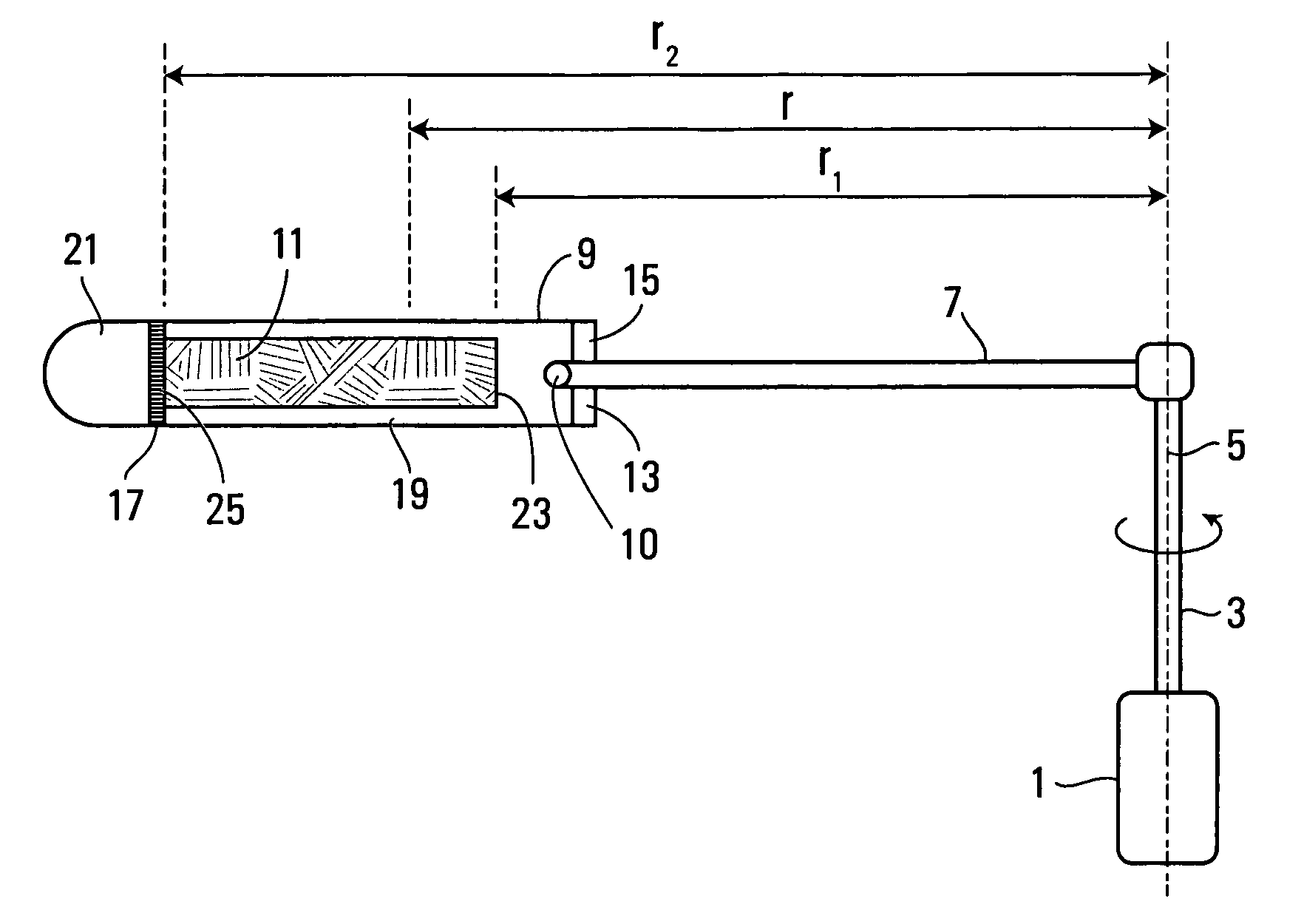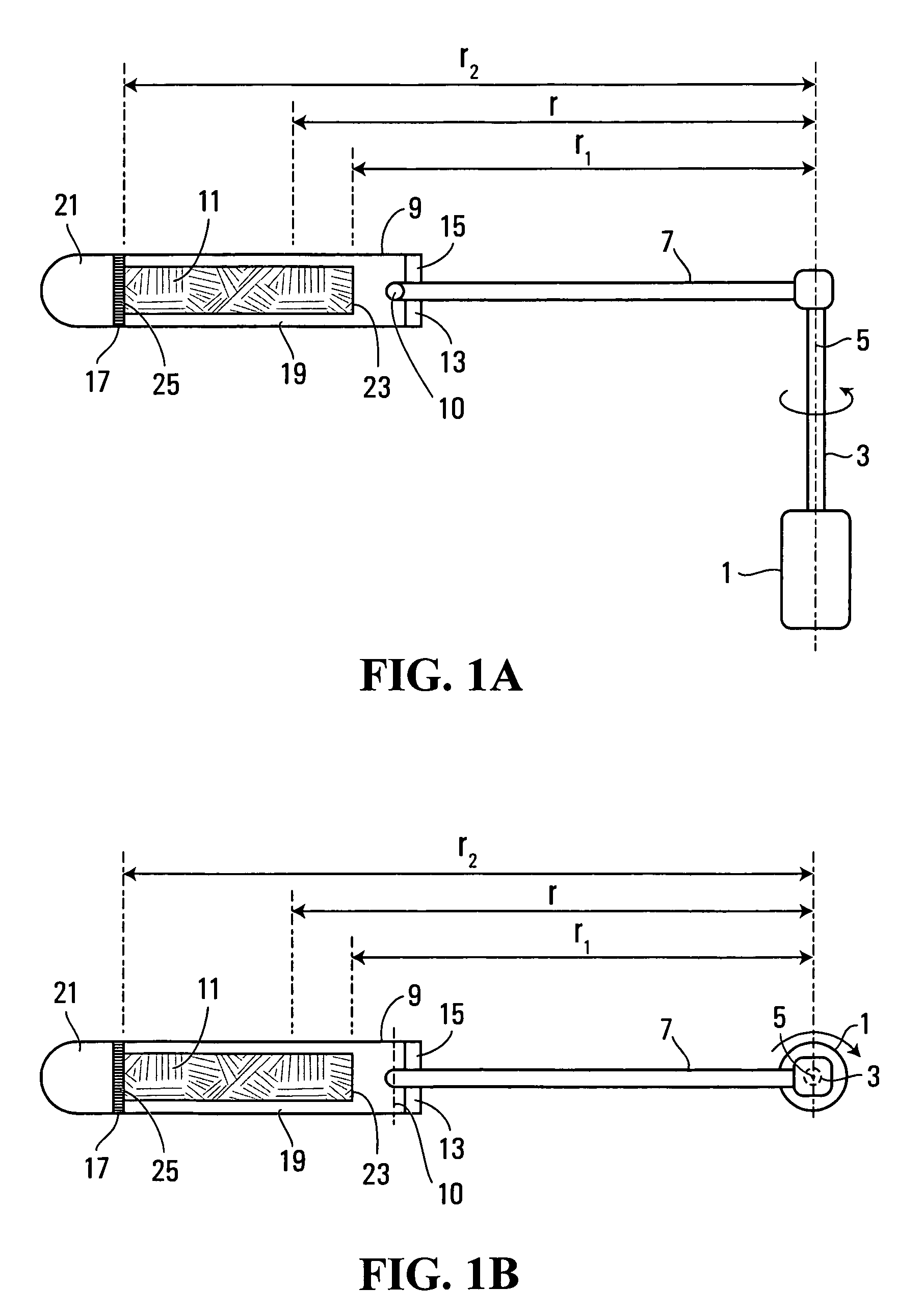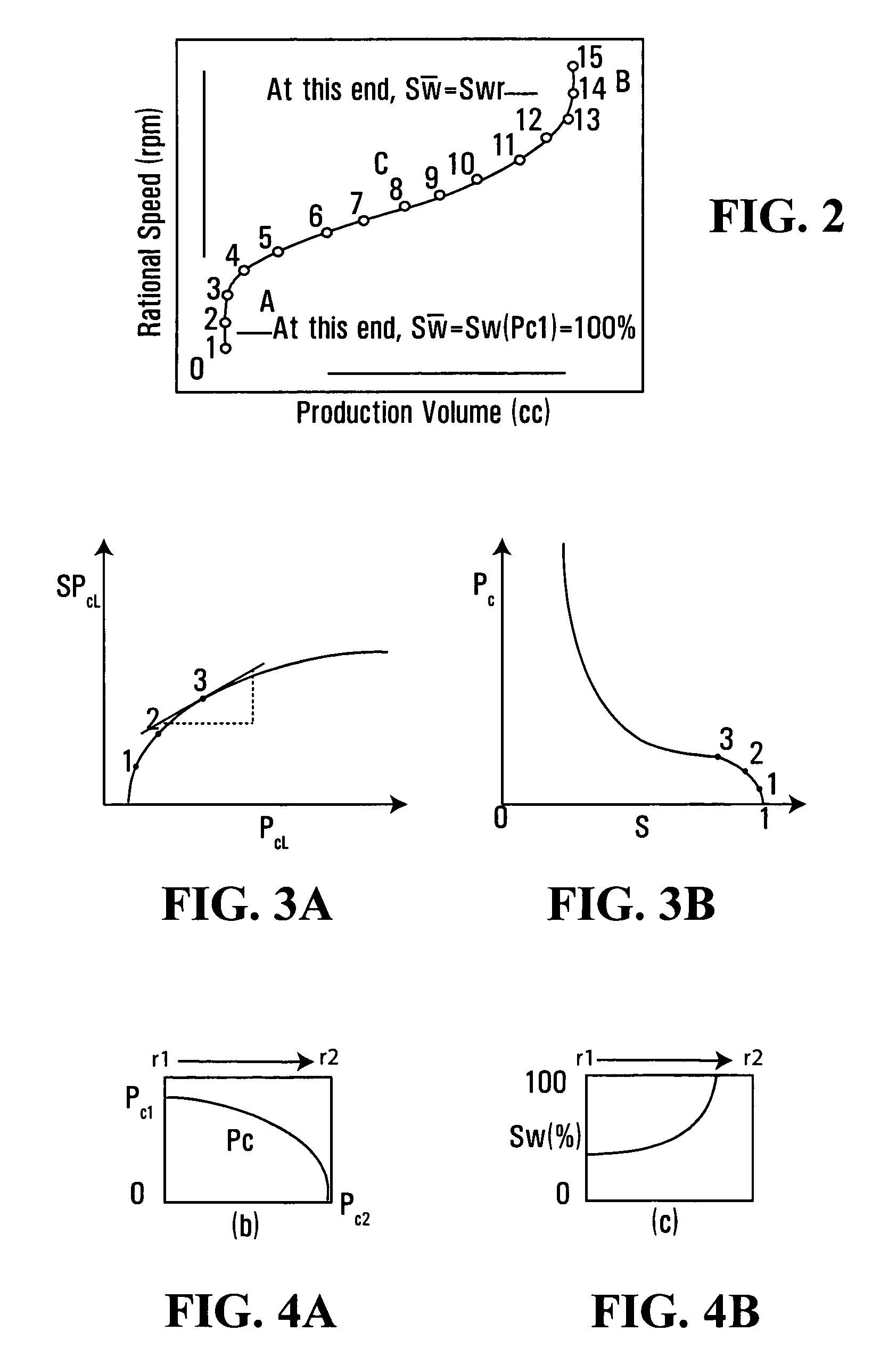Methods and apparatus for measuring capillary pressure in a sample
a capillary pressure and sample technology, applied in the field of methods and apparatus for measuring parameters in samples, can solve the problems of significant errors in the measurement of the capillary pressure curve, high cost, and rapid method of mercury intrusion, and achieve the effects of reducing vibration and frictional heating, reducing the radius of rotating parts, and increasing the signal-to-noise ratio
- Summary
- Abstract
- Description
- Claims
- Application Information
AI Technical Summary
Benefits of technology
Problems solved by technology
Method used
Image
Examples
Embodiment Construction
[0107]FIGS. 1a and 1b show a schematic diagram of a centrifuge for use in spinning a sample as part of a capillary pressure measurement, as described above, and which may be used in apparatus and methods of embodiments of the invention. The centrifuge comprises a motor 1 having a shaft 3 which rotates about a rotational axis 5, an arm 7 extending from the shaft 3 and a sample holder 9 pivotally connected to the arm 7 about a pivotal connection point 10 at the end 15 of the arm, so that the sample holder is free to swing up and down. The sample holder comprises a removable sealed end part or closure 13 at the inner end 15 and a porous plate 17 which divides the interior of the sample holder into a first chamber 19 for containing a porous sample and a second chamber 21 at the distal end thereof for collecting liquid 22 expelled from the sample through the porous plate 17.
[0108]The sample has an inlet face 23 spaced at a distance r1 from the rotational axis 5 and an outlet face 25 spac...
PUM
 Login to View More
Login to View More Abstract
Description
Claims
Application Information
 Login to View More
Login to View More - R&D
- Intellectual Property
- Life Sciences
- Materials
- Tech Scout
- Unparalleled Data Quality
- Higher Quality Content
- 60% Fewer Hallucinations
Browse by: Latest US Patents, China's latest patents, Technical Efficacy Thesaurus, Application Domain, Technology Topic, Popular Technical Reports.
© 2025 PatSnap. All rights reserved.Legal|Privacy policy|Modern Slavery Act Transparency Statement|Sitemap|About US| Contact US: help@patsnap.com



